External links
- Richard Estigarribia at BDFA (in Spanish)
| | This biographical article related to a football forward from Paraguay is a stub. You can help Wikipedia by expanding it. |
| Personal information | |||
|---|---|---|---|
| Full name | Richard Mariano Estigarribia Ortega | ||
| Date of birth | 15 August 1982 | ||
| Place of birth | Itauguá, Paraguay | ||
| Height | 1.82 m (6 ft 0 in) | ||
| Position(s) | Forward | ||
| Senior career* | |||
| Years | Team | Apps | (Gls) |
| 2002 | Kyoto Purple Sanga | ||
| 2002–2003 | 12 de Octubre | ||
| 2004 | Cobreloa | ||
| 2005 | 12 de Octubre | ||
| 2006 | Cobresal | ||
| 2006 | 12 de Octubre | ||
| 2007 | Sport Áncash | ||
| 2008 | César Vallejo | ||
| 2008 | José Gálvez | ||
| 2009 | Total Chalaco | 40 | (23) |
| 2010–2012 | José Terán | 72 | (19) |
| 2012 | Inti Gas | 9 | (0) |
| 2013 | Aucas | ? | (2) |
| 2013–2014 | 12 de Octubre | ||
| 2014–2015 | Oriente Petrolero | 19 | (5) |
| 2015 | San Lorenzo | 15 | (2) |
| 2016–2017 | Cienciano | ||
| 2018 | Martín Ledesma | ||
| *Club domestic league appearances and goals | |||
Richard Estigarribia (born 15 August 1982) is a Paraguayan footballer.
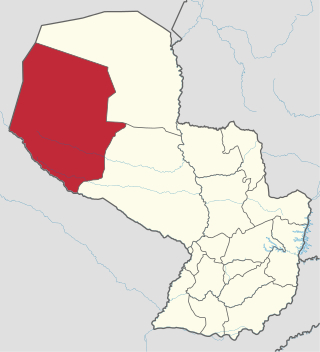
Boquerón is a department in the western region of Paraguay. It is the country's largest department, with an area of 91,669 km2 (35,394 sq mi), but, according to the statistics for 2021 by INE, its population is only 68,080, being the second least populated department. The department includes the Russian Mennonite colonies of Fernheim, Menno and its administrative center Loma Plata and Neuland. The capital is Filadelfia. Other towns are General Eugenio A. Garay, Doctor Pedro P. Peña and Mariscal Estigarribia.
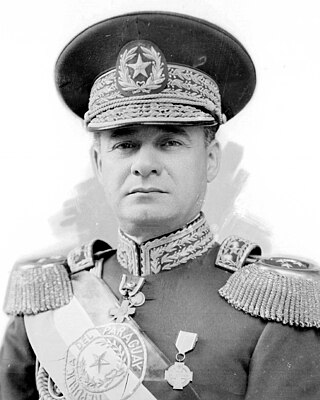
José Félix Estigarribia Insaurralde was a Paraguayan military officer and politician who served as the 34th President of Paraguay from 1939 until his death in a plane crash on September 7, 1940. He is most remembered for his previous role as commander in chief of the Paraguayan Army during the Chaco War, which resulted in an upset victory for Paraguay.

Higinio Nicolás Morínigo Martínez was a Paraguayan military officer and politician who served as the 35th president of Paraguay from 1940 to 1948, ruling as a military dictator.

In the Paraguayan War, the Battle of Yatay was fought on August 17, 1865, between the troops of the Triple Alliance and the soldiers of Paraguay near Paso de los Libres, Corrientes, Argentina.

The Paraguayan Army is the ground force branch of the Armed Forces of Paraguay. It is organized into three corps and nine divisions, and several commands and direction. It has gone to war on many occasions, notably in the War of the Triple Alliance (1864–1870) against Brazil, Argentina and Uruguay; the Chaco War against Bolivia; and the ongoing Paraguayan People's Army insurgency.
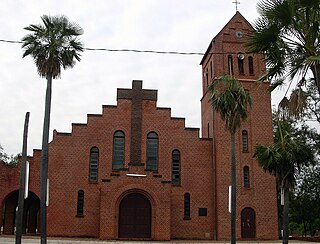
Mariscal Estigarribia is a town in the Boquerón Department, Paraguay.
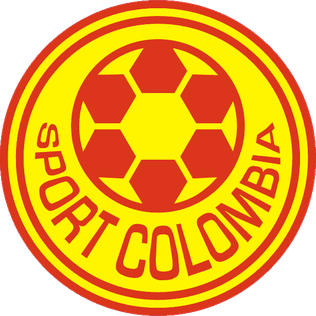
Club Sport Colombia, is a Paraguayan football club based in the city of Fernando de la Mora. The club was founded November 1, 1924 and plays in the Paraguayan third division. Their home games are played at the Estadio Alfonso Colmán which has a capacity of approximately 7,000 seats. The club is the former home of Jorge Daniel Florentín, Elio Mora, Ignacio Paniagua, Emilio Martinez, José Antonio Franco, Pedro Richard Irala, Carlos Antonio Mereles, Rodolfo Guillén, Marcelo Estigarribia and Victor Cristaldo.

Marcelo Alejandro Estigarribia Balmori is a Paraguayan footballer who plays as a left winger for Sportivo Ameliano in the Primera División Paraguaya.
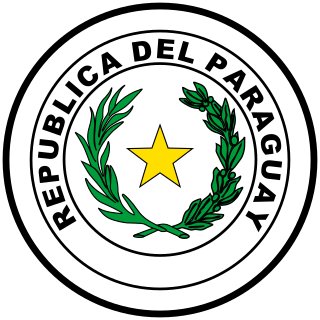
A constitutional referendum was held in Paraguay on 4 August 1940. It saw voters approve the new constitution.

The siege of Uruguaiana was an engagement in the Paraguayan War that began in late August 1865, and ended on 18 September that year when the Paraguayans were forced to surrender due to low food supplies. Paraguayan forces surrendered in spite of President López's order to the Paraguayan commander, Colonel Estigarribia, not to do so. After the allied victory at Uruguaiana, Lopéz withdrew his army from Argentina and Brazil.
Carlos Cecilio Estigarribia is a former Paraguayan footballer playing for clubs in Paraguay and Argentina, as well as for the Paraguay national football team in the 1999 Copa América Paraguay. He played as a midfielder. He was born in Luque, Paraguay.
José Félix Fernández Estigarribia is a Paraguayan politician and diplomat. He studied law at the National University of Asunción.
Estigarribia is a surname of Basque origin. Notable people with the surname include:
Events in the year 1940 in Paraguay.

The February Revolution in Paraguay was a military coup d'état on February 17, 1936, that brought to power colonel Rafael Franco. The revolution marked the end of Liberal Party rule in Paraguay and started the ascendancy of military dictatorships that lasted for more than half a century.
The Military ranks of Paraguay are the military insignia used by the Armed Forces of Paraguay.

The Battle of Butuí took place on June 26, 1865 in the Butuí or M'Butuí stream between the municipalities of São Borja and Itaqui in Rio Grande do Sul during the Paraguayan War.
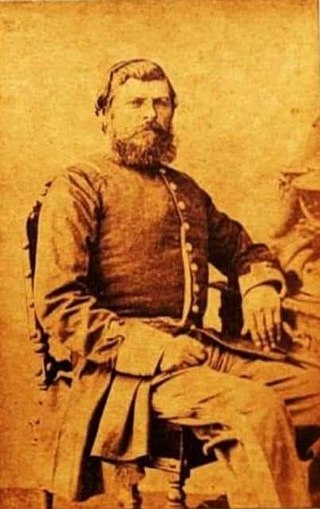
Antonio de la Cruz Estigarribia was a Paraguayan Lieutenant colonel who was notable for his service in the Paraguayan War. He served as one of the main Paraguayan commanders during the Invasion of Rio Grande do Sul, organizing the Battle of São Borja and the Siege of Uruguaiana before his surrender.

The Invasion of Rio Grande do Sul began on June 10, 1865 when about 7,500 soldiers under the command of General Antonio de la Cruz Estigarribia invaded the village of São Borja near Brazil's border with Argentina. About 3,000 men commanded by major Pedro Duarte stayed on the other side of the Uruguay River to accompany the advance of the main column. The Paraguayans always advanced along the river without major damage, with the exception of a confrontation on the Butuí River where a Paraguayan battalion had been defeated, until they reached Uruguaiana, where a two-month siege made them surrender unconditionally on September 18. The main objective of Paraguayan president Francisco Solano López to invade Rio Grande do Sul was to force a peace treaty favorable to the Paraguayans with the Empire of Brazil. The action took place in the second phase of the Paraguayan War, known as the Corrientes campaign.